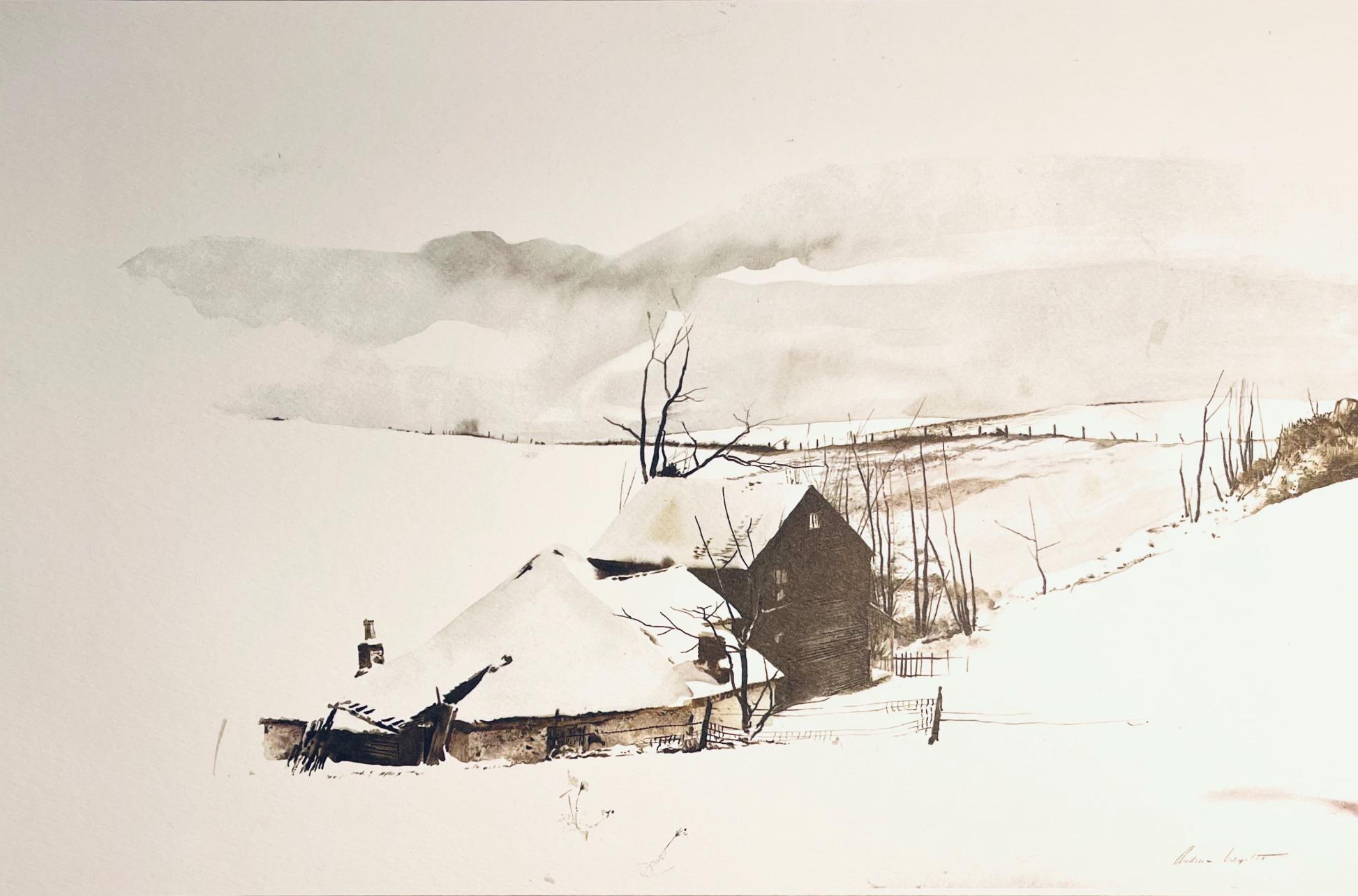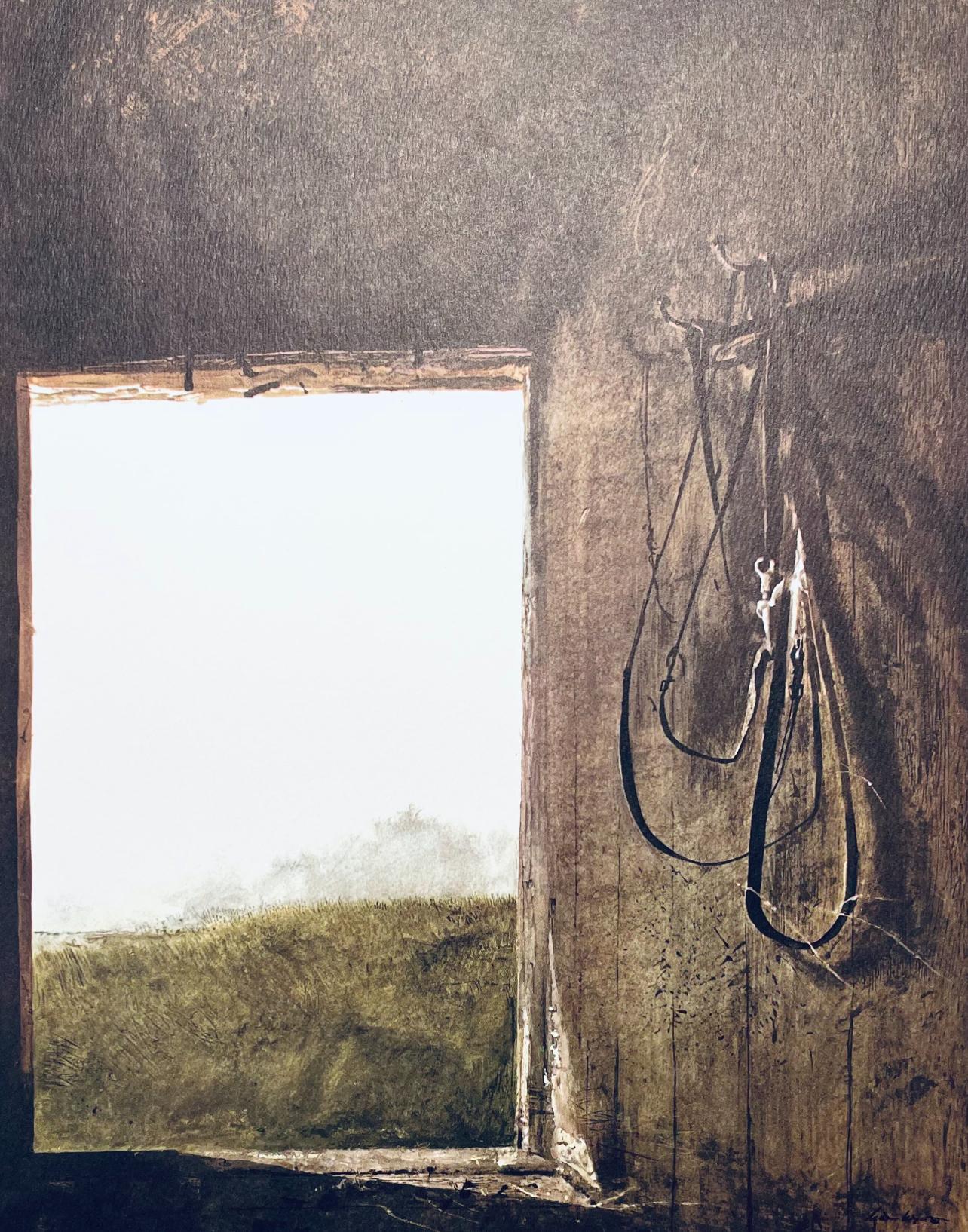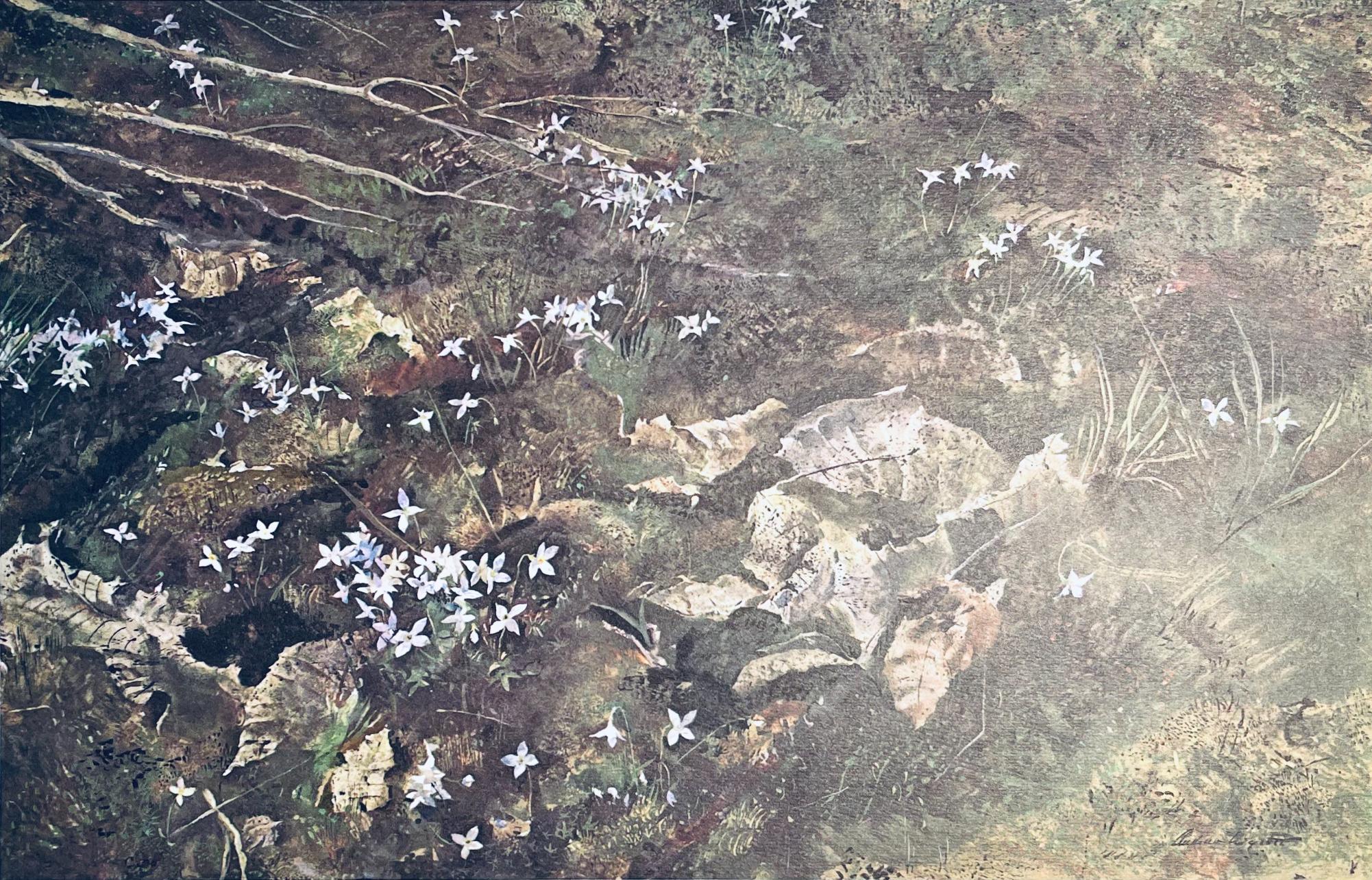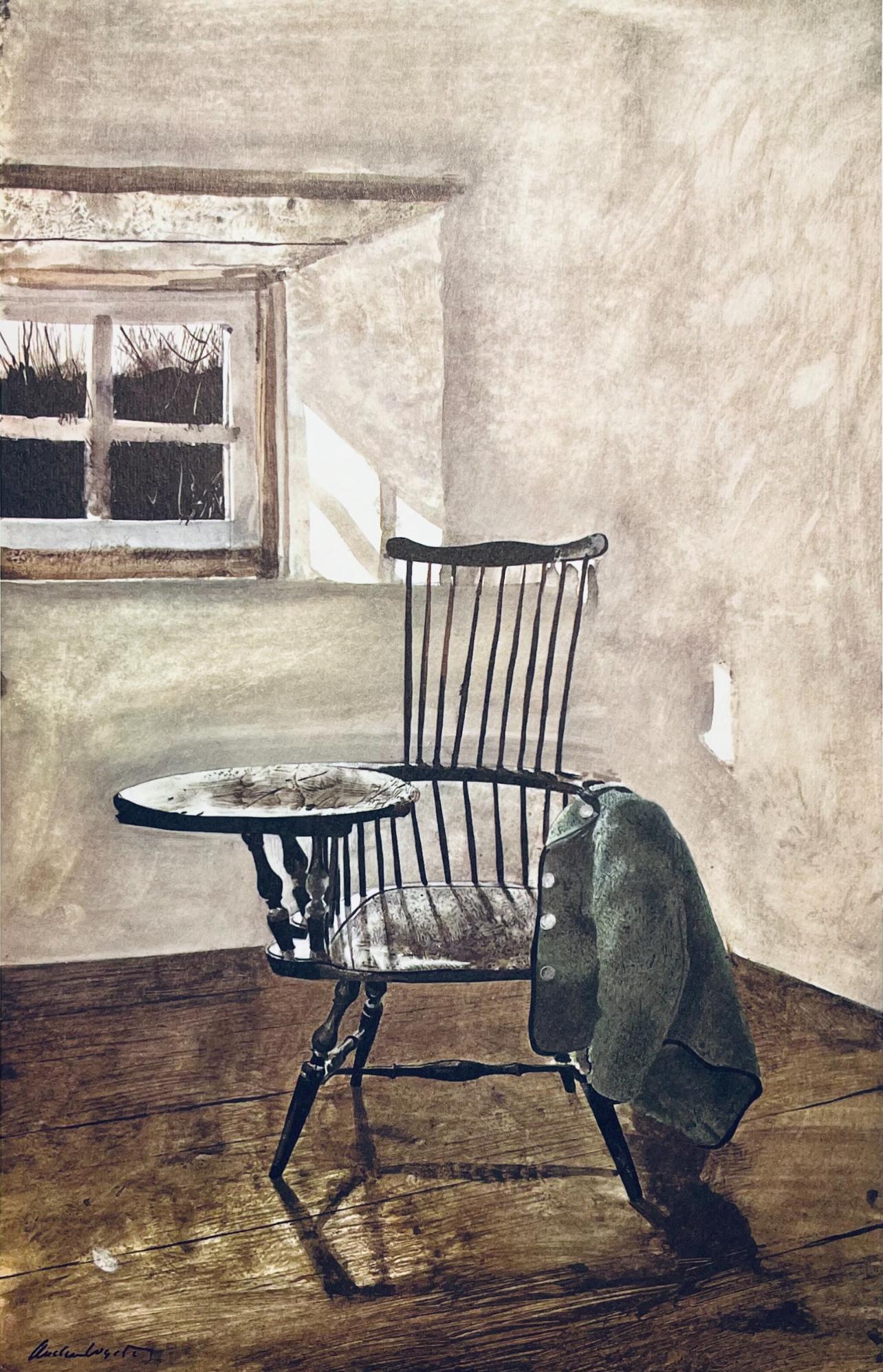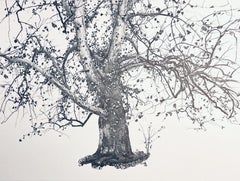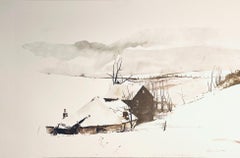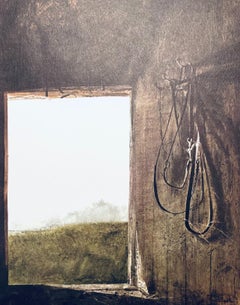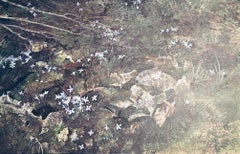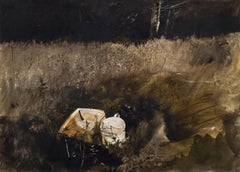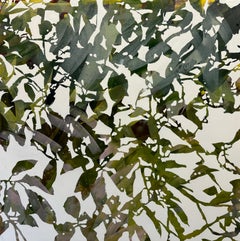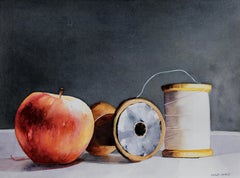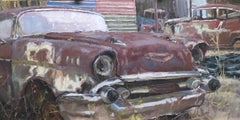Items Similar to Wyeth, Storing Up, The Four Seasons (after)
Want more images or videos?
Request additional images or videos from the seller
1 of 13
Wyeth, Storing Up, The Four Seasons (after)1962
1962
$716
$89520% Off
£536.18
£670.2220% Off
€618.27
€772.8420% Off
CA$1,006.37
CA$1,257.9620% Off
A$1,099.46
A$1,374.3220% Off
CHF 576.77
CHF 720.9620% Off
MX$13,376.24
MX$16,720.3020% Off
NOK 7,175.29
NOK 8,969.1120% Off
SEK 6,793.78
SEK 8,492.2320% Off
DKK 4,615.50
DKK 5,769.3720% Off
About the Item
Lithograph on vélin paper. Unsigned and unnumbered, as issued. Good condition. Published and printed by Art in America, New York in an edition of CDVII/D. From the folio, The Four Seasons, Paintings and Drawings by Andrew Wyeth, 1962. Excerpted from the folio, In 1962 the editors of Art in America proposed to Wyeth a portfolio of reproductions of his recent dry-brush drawings. The artist and his wife suggested the theme, "The Four Seasons," because of the essential role played in his work by the cycle of the seasons. The drawings were selected by Andrew and Betsy Wyeth from works in the house and studio at Chadds Ford, supplemented by some owned by friends. With a few exceptions they had never been exhibited or reproduced. The plates were made directly from the originals. In these drawings Wyeth's loving concentration on the object is fully revealed. But as always in his work, this concern with the tangible is balanced by sensibility to mood, to the emotion arising from the actual. They are pervaded with a sense of the season-the exact time of year, the hour of the day, the quality of the light. To the truth and subtlety with which he captures these intangible factors, these drawings owe their poignant poetry. Each has its individual mood. The thin sunlight and faint warmth of early spring in Spring Sun, the stir of returning life in New Leaves, the full flowering of spring in Quaker Ladies. A summer morning's sea fog in Burning Off, the drowsy ripeness of August in The Berry Picker. The serene melancholy of fall in Teel's Island, the lingering golden light of Early October. Finally, the white hush of snow, transforming the familiar world, blanketing the cold earth beneath which the seed sleeps.
ANDREW WYETH (1917-2009) was an American visual artist, primarily a realist painter, working predominantly in a regionalist style. He believed he was also an abstractionist, portraying subjects in a new, meaningful way. The son of N. C. Wyeth and father of Jamie Wyeth, he was one of the best-known U.S. artists of the middle 20th century. James H. Duff explores the art and lives of the three men in An American Vision: Three Generations of Wyeth Art. Raised with an appreciation of nature, Wyeth took walks that fired his imagination. Henry David Thoreau, Robert Frost, and King Vidor's The Big Parade (1925) inspired him intellectually and artistically. Wyeth featured in a documentary The Metaphor in which he discussed Vidor's influence on the creation of his works of art, like Winter 1946 and Portrait of Ralph Kline. Wyeth was also inspired by Winslow Homer and Renaissance artists.
- Creation Year:1962
- Dimensions:Height: 13 in (33.02 cm)Width: 17 in (43.18 cm)
- Medium:
- Movement & Style:
- After:Andrew Wyeth (1917-2009, American)
- Period:
- Condition:
- Gallery Location:Southampton, NY
- Reference Number:1stDibs: LU1465214644622
About the Seller
4.9
Platinum Seller
Premium sellers with a 4.7+ rating and 24-hour response times
Established in 1978
1stDibs seller since 2021
1,187 sales on 1stDibs
Typical response time: <1 hour
- ShippingRetrieving quote...Shipping from: Southampton, NY
- Return Policy
Authenticity Guarantee
In the unlikely event there’s an issue with an item’s authenticity, contact us within 1 year for a full refund. DetailsMoney-Back Guarantee
If your item is not as described, is damaged in transit, or does not arrive, contact us within 7 days for a full refund. Details24-Hour Cancellation
You have a 24-hour grace period in which to reconsider your purchase, with no questions asked.Vetted Professional Sellers
Our world-class sellers must adhere to strict standards for service and quality, maintaining the integrity of our listings.Price-Match Guarantee
If you find that a seller listed the same item for a lower price elsewhere, we’ll match it.Trusted Global Delivery
Our best-in-class carrier network provides specialized shipping options worldwide, including custom delivery.More From This Seller
View AllWyeth, New Leaves, The Four Seasons (after)
By Andrew Wyeth
Located in Southampton, NY
Lithograph on vélin paper. Unsigned and unnumbered, as issued. Good condition. Published and printed by Art in America, New York in an edition of CDVII/D. From the folio, The Four Se...
Category
1960s American Realist Figurative Prints
Materials
Lithograph
Wyeth, The Corner, The Four Seasons (after)
By Andrew Wyeth
Located in Southampton, NY
Lithograph on vélin paper. Unsigned and unnumbered, as issued. Good condition. Published and printed by Art in America, New York in an edition of CDVII/D. From the folio, The Four Se...
Category
1960s American Realist Figurative Prints
Materials
Lithograph
Wyeth, Burning Off, The Four Seasons (after)
By Andrew Wyeth
Located in Southampton, NY
Lithograph on vélin paper. Unsigned and unnumbered, as issued. Good condition. Published and printed by Art in America, New York in an edition of CDVII/D. From the folio, The Four Se...
Category
1960s American Realist Figurative Prints
Materials
Lithograph
Wyeth, Quaker Ladies, The Four Seasons (after)
By Andrew Wyeth
Located in Southampton, NY
Lithograph on vélin paper. Unsigned and unnumbered, as issued. Good condition. Published and printed by Art in America, New York in an edition of CDVII/D. From the folio, The Four Se...
Category
1960s American Realist Figurative Prints
Materials
Lithograph
Wyeth, Early October, The Four Seasons (after)
By Andrew Wyeth
Located in Southampton, NY
Lithograph on vélin paper. Unsigned and unnumbered, as issued. Good condition. Published and printed by Art in America, New York in an edition of CDVII/D. From the folio, The Four Se...
Category
1960s American Realist Figurative Prints
Materials
Lithograph
Wyeth, Canvasbacks, The Four Seasons (after)
By Andrew Wyeth
Located in Southampton, NY
Lithograph on vélin paper. Unsigned and unnumbered, as issued. Good condition. Published and printed by Art in America, New York in an edition of CDVII/D. From the folio, The Four Se...
Category
1960s American Realist Figurative Prints
Materials
Lithograph
You May Also Like
Quart and a Half
By Andrew Wyeth
Located in Palm Desert, CA
"Quart and a Half" is an American Realist abstract landscape watercolor on paper painting by Andrew Wyeth in 1961. The artwork is 21 x 29 1/4 inches and is 33 3/4 x 42 1/4 x 1 inches...
Category
20th Century American Realist Landscape Paintings
Materials
Paper, Watercolor
Four seasons, Rebecca Tucker, Original landscape painting, Contemporary art
Located in Deddington, GB
I am keen to capture the sense of calm we all feel when we are in nature, looking up through leaves into the sunlight. My consistent focus for several years has been to explore the b...
Category
2010s Contemporary Landscape Paintings
Materials
Acrylic, Wood Panel
Seeds Sown, Original Painting
By Dwight Smith
Located in San Francisco, CA
Artist Comments
In this realist still life watercolor, artist Dwight Smith focused on the warm contrast of the bright red apple and wooden spools against the dramatic gradien...
Category
21st Century and Contemporary American Realist Still-life Drawings and W...
Materials
Watercolor
"Harvested" - Impressionist Plein Air Landscape Painting - Wyeth
Located in Atlanta, GA
"Harvested" is a plein air landscape painting featuring red, yellow, and blue hues.
David Boyd is inspired by the work of Edward Hopper, Andrew Wyeth and Wi...
Category
2010s Impressionist Landscape Paintings
Materials
Linen, Oil
Biscuit Before Harvest, Original Painting
By Dwight Smith
Located in San Francisco, CA
Artist Comments
A white farmhouse sits quietly beneath a gray sky, its brick chimneys contrasting against the muted backdrop. A red tractor rests in the golden field. Artist ...
Category
21st Century and Contemporary Realist Interior Drawings and Watercolors
Materials
Watercolor
Branches
By Gregory Sumida
Located in Palm Desert, CA
A watercolor by Gregory Sumida. "Branches" is a watercolor on paper executed in browns, greens, yellows and blue and depicting a tree trunk with bare branches set against a landscape...
Category
1970s American Realist Landscape Drawings and Watercolors
Materials
Paper, Watercolor
$12,500
More Ways To Browse
Damien Hirst Minnie
David Bathsheba
Deborah Azzopardi
Divan Japonais
Donald Easton
Dr Atl
Dubonnet Poster
Fashion Pochoir
Foire De Paris Print
Four Freedom Poster
Francis Bacon Poster
Fritz Scholder Lithograph
G Barbier Pochoir
G Rouault
Gay Vintage Posters
Georges Rouault Christ
Georges Rouault Fleurs
Giovanni Domenico Campiglia

